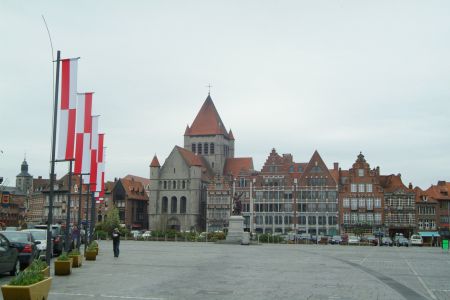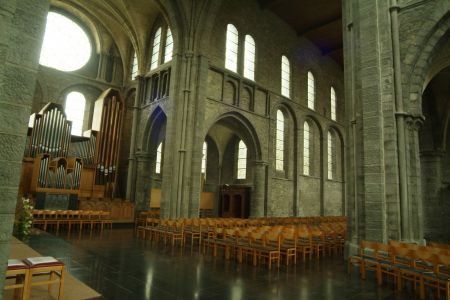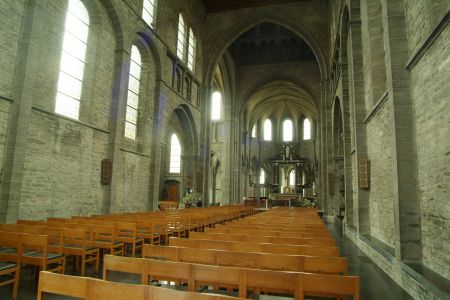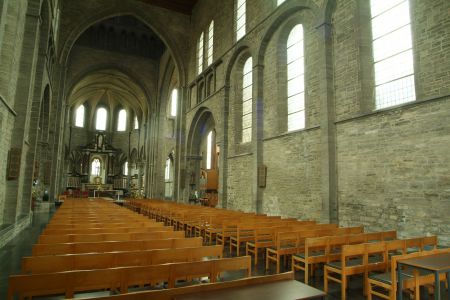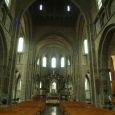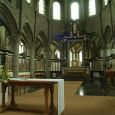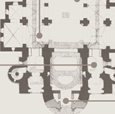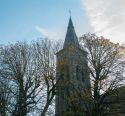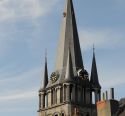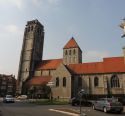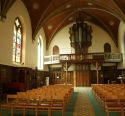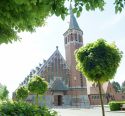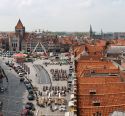Church | XIII | Romanesque | Catholic Church

Map
Opening hours
01 April - 31 October
Mon 9.00 - 18.00
Tue 9.00 - 18.00
Wed 9.00 - 18.00
Thu 9.00 - 18.00
Fri 9.00 - 18.00
Sat 9.00 - 18.00
Sun 9.00 - 18.00
01 November - 31 March
Mon 9.00 - 16.00
Tue 9.00 - 16.00
Wed 9.00 - 16.00
Thu 9.00 - 16.00
Fri 9.00 - 16.00
Sat 9.00 - 16.00
Sun 9.00 - 16.00
Religious offices
Description
This church is in a central location in the town at the end of the main square.
The nave dates from the 12th century. The transept and the choir with it ribbed vaults are from the transitional period between Romanesque and Gothic. The tower is 13th century and the choir with its marble enclosure is 17th century. In the 15th century this was surrounded by a cloister and several chapels.
Photos
Media
Remarkable elements
The Annunciation Group - Treasury (1427/1428)
Made of white Avesnes stone, these two statues representing the Virgin and the angel Gabriel are by the Turinese sculptor Jean Delemer, the original polychrome being the work of the painter Robert Campin. The current polychromy dates back to 1858. The two heads that the iconoclasts had mutilated in 1566 were replaced around 1600, in the style of the time.
Offered by Agnes Piétarde, widow of Jean du Bus, to the church of Saint-Pierre in 1428, they were transferred on an imprecise date to the church of Sainte Marie-Madeleine, and then, at the latter's closure, to the cathedral.
It was in March 2010 that they were installed in their current location, in the Saint-Quentin church, after having been restored by the Royal Institute of Artistic Heritage, and thanks to the patronage of the Inbev Baillet-Latour Fund. These statues, recognized as treasures of the Walloon Region, are one of the most remarkable witnesses of 15th century statuary in our regions.
Translated with www.DeepL.com/Translator
Fence of the choir (1656-1723)
Note the marble columns (1656/1723). The complex, heavily damaged during the war, was restored in 2006.
Jacques de Chastagne's tomb (1327)
In the southeastern chapel, lying with weeping in a Tournai stone enfeure with three-toothed teeth, restored. Above it is the statue of "Notre-Dame à la Treille"
Funeral chapel Pasquier-Grenier (1469/1574)
Dated from the third quarter of the 15th century in late Romanesque style. Severe damage during the bombardments of May 1940.
Construction and decoration of this chapel are the work of the famous Tournai tapestry artist Pasquier-Grenier who had this chapel built and paid it as a burial chapel for his wife Marguerite de Lannoy, her family and himself. The works took place between 1469 and 1474. This chapel was dedicated to the seven sacraments. Originally it was completely painted with Eucharistic themes and symbols. In 2013 she was completely restored by Mrs Marie-Hélène Ghisdal.
Notre-Dame de la Treille (1724)
Executed around 1685 (?) by the goldsmith from Turin, Hermès Volcart (?). Assembly of folded silver sheets worked with repoussé, nailed to two superposed wooden blocks.
The Brotherhood of Notre-Dame de la Treille was erected in the Saint-Nicaise church on 10/8/1659, moved to Saint-Quentin in 1769 with the abolition of the Saint-Nicaise parish, then to Sainte-Marguerite in 1782; removed in 1786, restored in honour of Sainte-Marguerite in 1843, canonically erected again in 1864.
Since the 13th century, the city of Lille has honoured the Virgin Mary under the title of Notre-Dame de la Treille. This name comes from the latticework surrounding the statue, an image of an enclosure where one can find refuge and peace.
Each year the statue is worn during the Great Procession in September.



